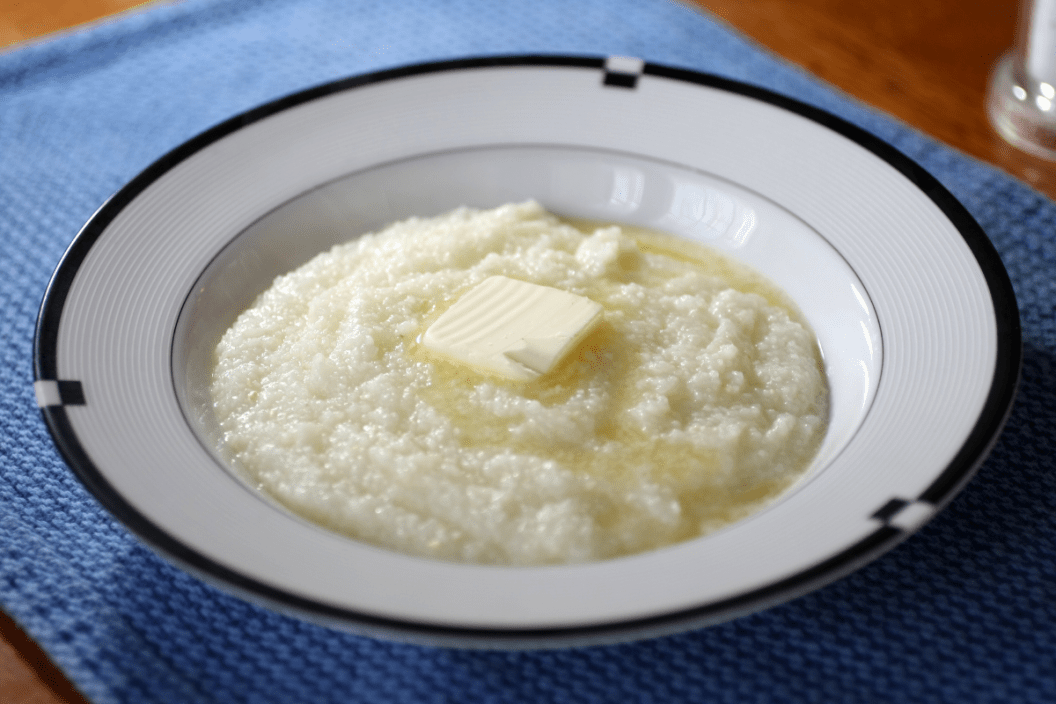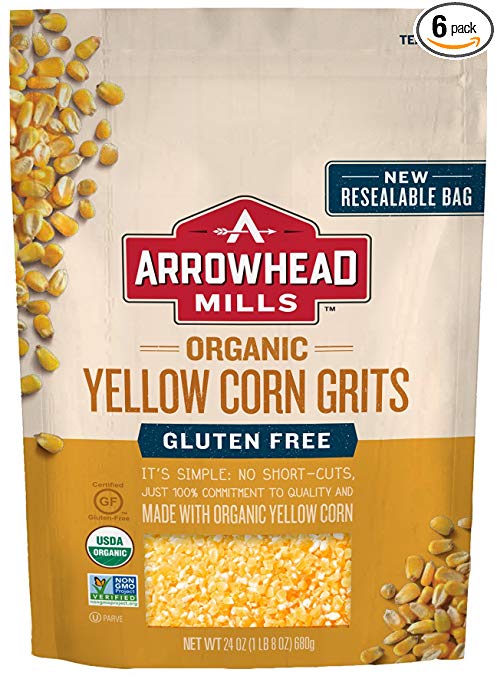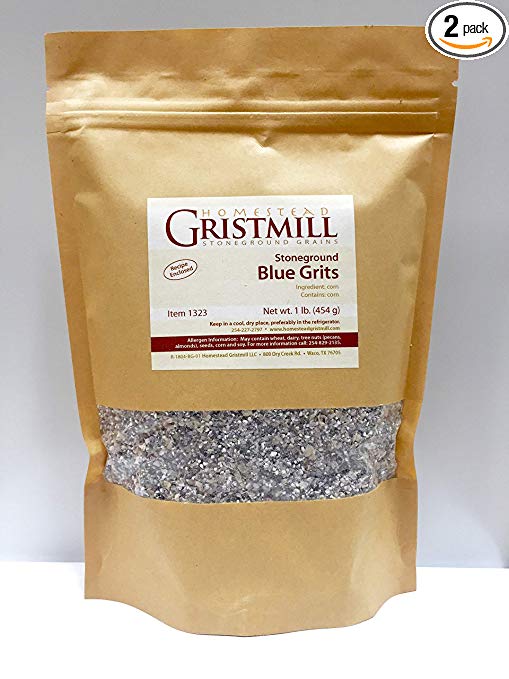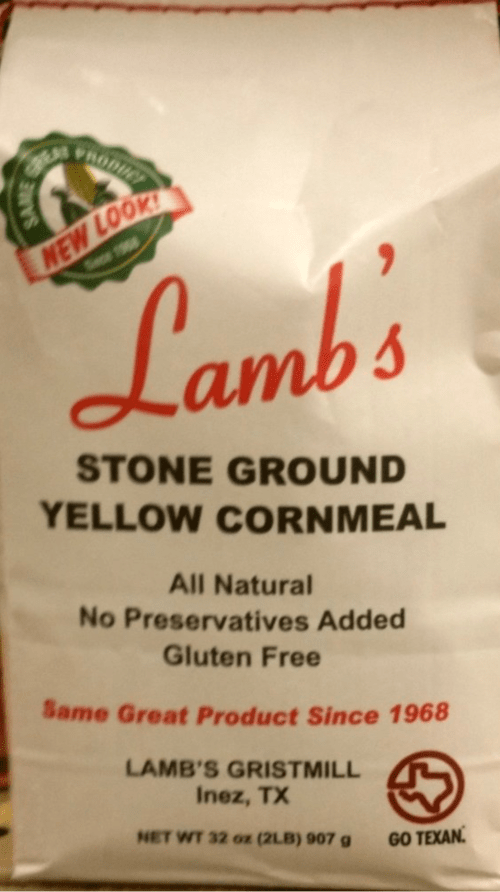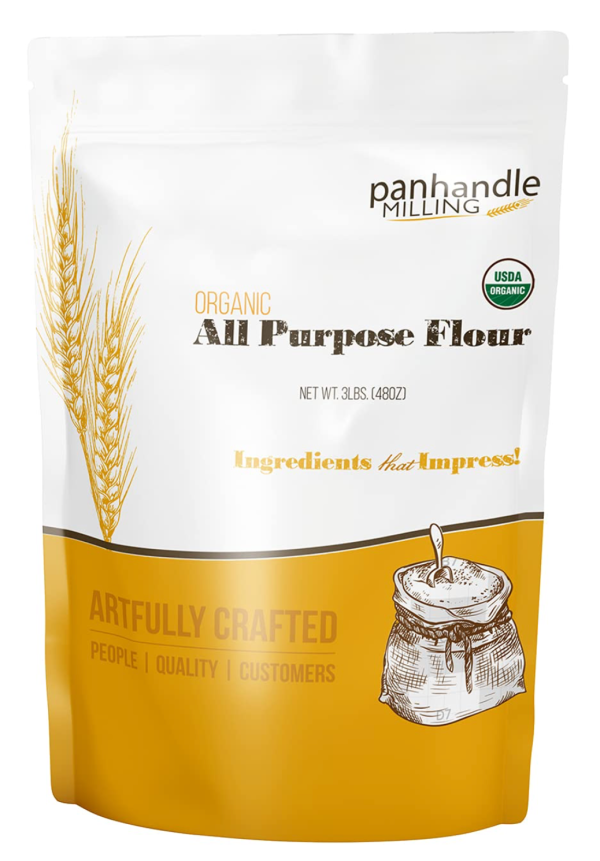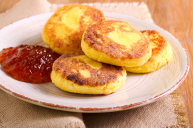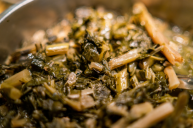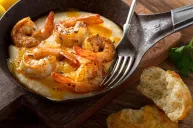Those of us from the South are no stranger to grits, but if you didn't grow up eating them you may have some questions. What are grits, and are they related to cornmeal and polenta? Are they all just the same thing with a different name? Isn't it all just ground up corn kernels?
Videos by Wide Open Country
Yes, they're all ground corn, but there are a few distinctions that set them apart. To make matters worse, there's very little regulation on labeling these products in the United States. So it's very easy to become confused! Never fear, we're here to definitely answer what are corn grits and teach you what makes them different from polenta and cornmeal. Let's get started with the simplest of the three: cornmeal.
What is Cornmeal?
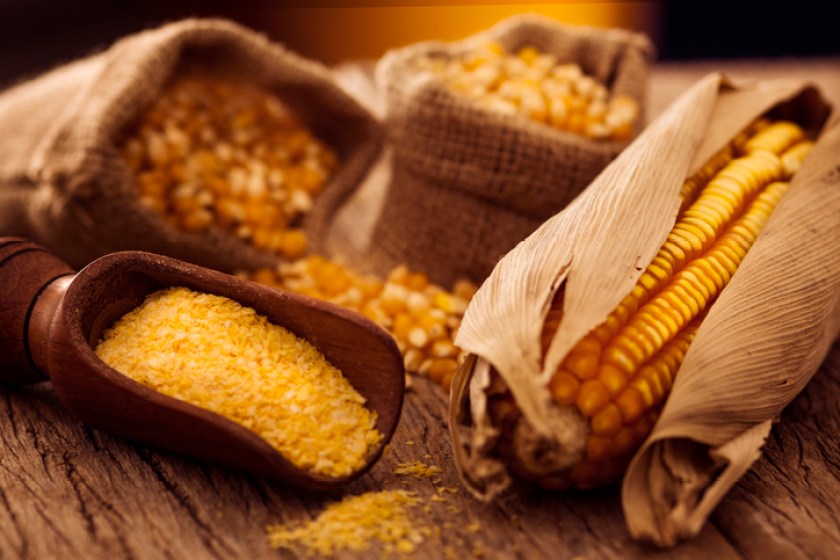
Getty Images/Giselleflissak
Cornmeal is nothing more than finely ground, dried corn. No additives, no processing, just dry some corn and run it through a mill. It is usually coarsely ground, although sometimes it is processed until it is very fine (in which case it is usually called corn flour). While yellow corn is the most popular type of cornmeal, you can also find white or blue cornmeal.
Don't confuse cornmeal with masa - which is ground up nixtamalized corn (corn treated with an alkaline lime solution). Masa (also called masa harina) is made specifically for making tortillas or tamales, whereas cornmeal has many other cooking applications.
The possibilities are endless when cooking with cornmeal. You can use it as the batter for deep-fried foods, where it adds a nice gritty texture. Transform it into a sweet and luscious dessert by making spoon pudding. The most popular way to use cornmeal is the Southern comfort food favorite cornbread. When combined with buttermilk, the cornmeal becomes soft and chewy, the perfect accompaniment to chili. If you happen to have leftovers (which, I almost never do), you can turn that cornbread into bread pudding. Or, make this recipe from Saveur for spicy cornbread stuffing. It's a staple at my holiday table these days!
Cornmeal is also a healthy choice for a meal, being cholesterol-free, low-fat and low-sodium. Plus, if you eat a gluten-free diet, cornmeal is fully gluten-free and is an ideal choice for a delicious, healthy dish. Cornmeal is also a good source of fiber, which is important for keeping blood sugar and hunger levels stable. It's also an excellent choice if you're looking to add protein to your diet, containing 4.5 grams of protein per cup.
You can easily pick up some cornmeal at the store, or you can make your own from fresh corn! This process is relatively simple, and you need a dehydrator, something to grind, a corn peeler, an Instant Pot or pressure cooker, a knife, a baking sheet, parchment paper, and desiccant packets. You can use an Air Fryer as a dehydrator if you don't have one on hand. Here's a step-by-step process at Southern Bytes to try for yourself.
What Are Grits and What Are Grits Made From?
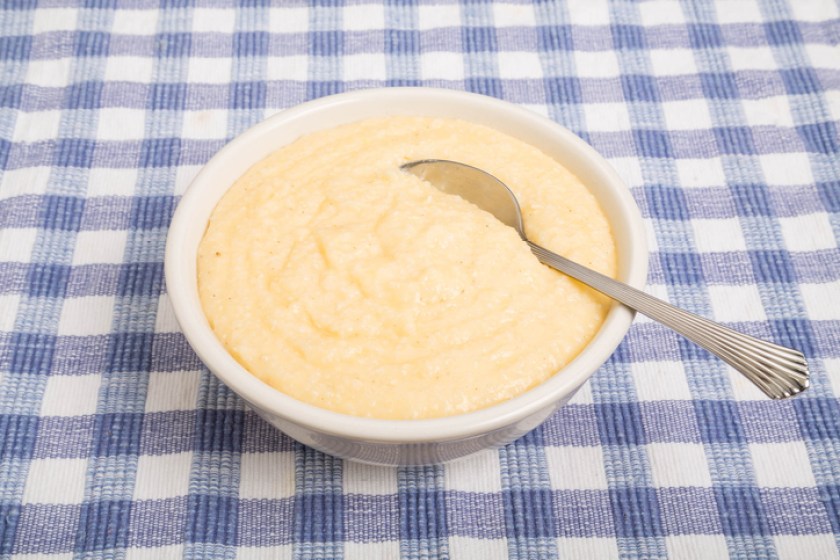
Getty Images/dbvirago
Grits originated in Native American communities, but they are very popular today in the Southern United States (like Georgia and South Carolina). Unlike cornmeal, grits are usually made from dent corn. This starchy variety of corn is less sweet than sweet-corn and it becomes smooth creamy grits as it cooks. This type of corn is treated with lime to remove the hull which technically makes it hominy. After the treated corn is dried, it is coarsely ground to become hominy grits. Most grits are ground more coarsely than cornmeal.
From here, you will find two types of grits: stone ground grits (which are whole grain grits that retain the germ) and instant grits. The latter quick grits will cook up in about 5 to 10 minutes. The stone ground grits take 45 minutes to cook fully, but they have more health benefits. If you're looking for excellent heirloom grit, look for Anson Mills. They might not be in the grocery store, but you'll definitely find them online and all their products have great corn flavor.
Along with being delicious and versatile, grits have a number of health benefits that make it even more worth it to give them a try. The most notable benefit is that they're high in iron, which is important for red blood cell production. Grits are also packed full of B vitamins like folate and thiamine, and they contain vitamin E, calcium, pantothenic acid, and potassium.
How to Make Grits
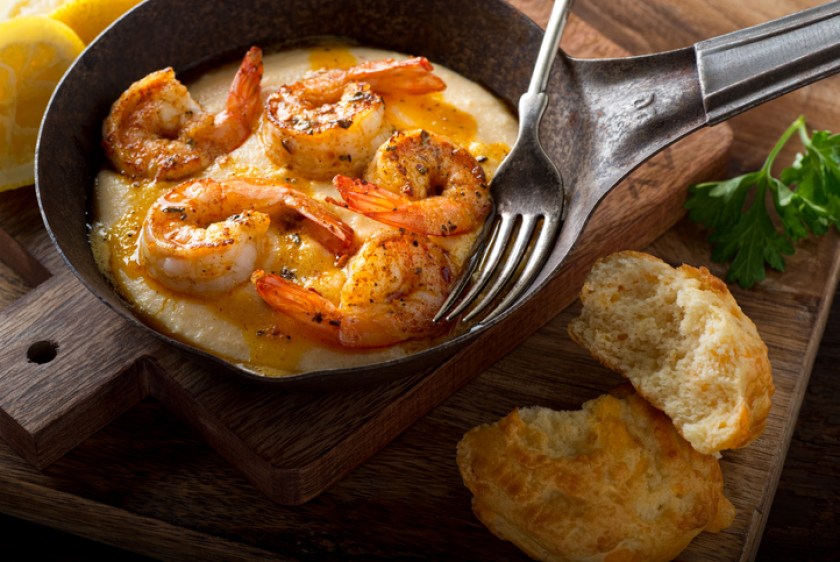
Getty Images/Fudio
Grits are neutral in flavor, so it's not uncommon to see a grits recipe with cheddar cheese or savory ingredients like bacon. In fact, cheese grits are one of the most popular ways to enjoy it. But you can also go with plain grit and dress it up with a dab of unsalted butter. If you're new to grits, this recipe from Food Network for shrimp and grits is a perfect way to get started!
Making southern grits only requires a stovetop, a pot, and a wooden spoon to stir. Cooking grits can take a few minutes to an hour depending on the varieties of grits and if they are quick-cooking. The cook time is usually spent stirring the pot. Some cooks like to add in heavy cream or cream cheese to make it extra creamy.
What is Polenta?
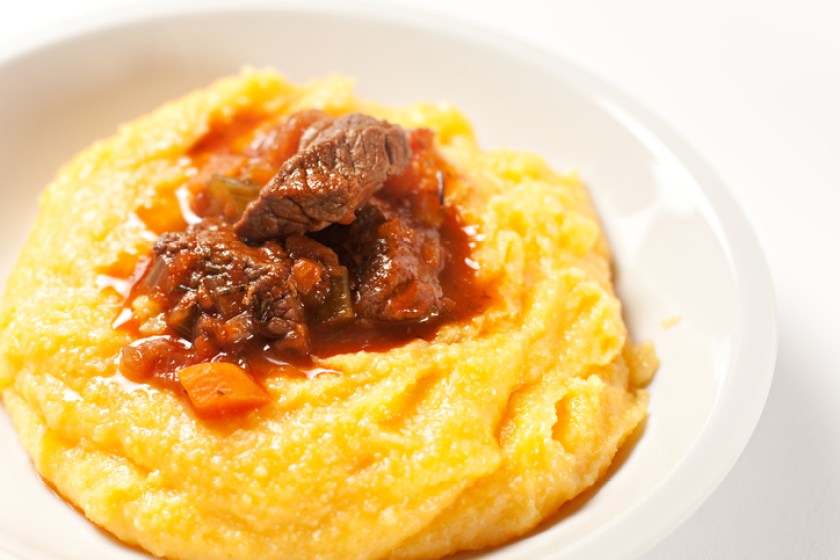
Getty Images/svariophoto
Polenta is similar to grits except that it is made with flint corn. Native to Italy, polenta is made by coarsely grinding up dried flint corn. This variety of corn has a hard starch in the center, which gives polenta its characteristic grainy texture. In the grocery store, you will find many varieties of polenta. It even comes pre-cooked in tubes! Strangely enough, the word polenta refers both to the raw grains and also the cooked porridge.
Like grits, you can cook polenta with any type of liquid - from water to stock to milk. Once cooked, you can serve it as a porridge topped with braised meat and parmesan. You can also cool polenta and cut it into squares. Topping last night's polenta cakes with bacon and eggs is my favorite way to repurpose my leftovers. If you've never made breakfast polenta cakes, start with this recipe.
Polenta also has a number of notable health benefits that make it as healthy as it is tasty. For one, it has high amounts of protein and fiber, which are both essential in helping you feel full after a meal. Fiber is important for gut-health, and protein gives you the energy you need to get through the day. It's also full of complex carbohydrates, which break down slower than simple carbs and keep blood sugar levels stable. Along with this, this tasty corn-based dish contains important vitamins and minerals like vitamin A, iron, magnesium and zinc, which are all essential for a healthy diet.
How to Make Polenta
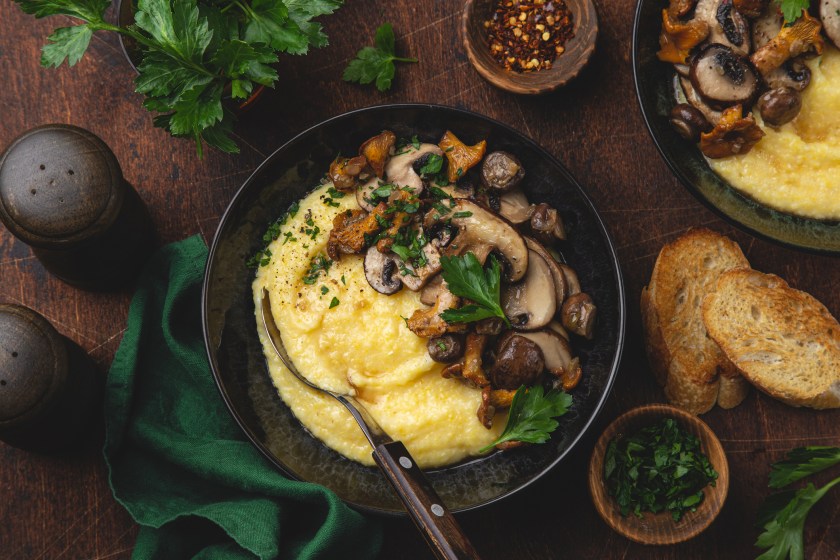
Getty Images/Anna_Shepulova
Polenta is easy to make, as all you need is the polenta, water, butter, salt, and whatever flavorings you desire. To make it more flavorful, you can add parmesan cheese, red pepper, garlic, or any other seasonings that you think would add to the dish. The classic ratio when making polenta is 1:4, with 1 part polenta and 4 parts water. However, you can adjust this to your preferences, using more or less polenta to make your mixture more watery or thicker. Another easy way to make your polenta more flavorful is to use chicken broth or veggie broth in place of water.
Use polenta as a base for flavorful meat or veggie dishes, or have it on the side to add some extra protein to your meal. To make polenta, you'll bring water and salt to a boil, and then add in the polenta. Simmer the mixture and cook covered on the stovetop for about 30 minutes or until it reaches the desired thickness. It should be nice and creamy, with the grains tender and easy to chew. Then, add in butter and any flavorings you like. Enjoy your easy, delicious polenta! Here's a full recipe at All Recipes.
All that talk about corn and I'm hungry! Check out these 9 sweet and savory grits recipes, or serve your favorite wild game recipes on top of a bed of polenta as a side dish.
4 Locally-owned Grit Companies
1. Arrowhead Mills
Reigning from the Texas Panhandle, Arrowhead Mills has been growing organic corn and wheat for over 50 years. Their Organic Yellow Corn Grits are gluten-free and non-GMO certified.
2. Homestead Gristmill
Waco, Texas became Homestead Gristmill's new home in 2001. Next time you're in Central Texas, stop by for some organic blue corn grits. Since these are stone ground grits they have more nutritional value. It's not often Southern eating is healthy, so dig in! Their grits packages even come with a recipe.
3. South Texas Milling, Inc.
Owned and operated in Inez, Texas, South Texas Milling, Inc. purchased Texas based milling company Lamb's Gristmill in 2014. Lamb's Gristmill stone ground white grits can be purchased from South Texas Milling, Inc.'s website or you can purchase stone ground yellow cornmeal from Amazon.
4. Panhandle Milling
Located in Dawn, Texas, Panhandle Milling specializes in corn, organic grains, traditional grains, and distillery grains. Support your local Texas mill here.
This article was originally published on November 27th, 2018.
Products featured on Wide Open Eats are independently selected by our editors. However, when you buy something through our links, we may earn a commission.
